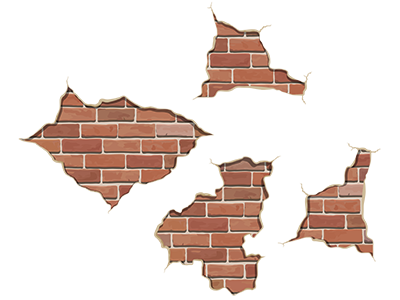When to Worry About Cracks in Brick?
- Some cracks are harmless, some are serious.
- If they're thinner than a 50 pence piece, you're usually okay.
- Do not ignore cracks or other signs of subsidence.
- You must declare subsidence to buyers and insurers.
When should I be worried about cracks in brick and masonry walls?
Cracks in the brickwork of a building can be a sign that the ground is shifting - this is called subsidence. If the earth under the foundation shifts unevenly, then the house can't settle normally. For example, one side of the building might sink slightly further or faster than the rest, causing masonry cracks in the bricks. While many of the cracks which may appear in a building are not disastrous, if the land beneath the home is moving, this must be addressed as soon as possible to avoid compromising the building's structural integrity.
Read more to learn about different types of cracks in the walls of your house and when to worry about cracks in brick being structural.
Are cracks in brickwork serious?
Some cracks in brickwork are more serious than others. The less serious ones, like the ones caused by spalled bricks, should still be treated and filled, as any breach in the external skin of the building can allow water in, causing damp or mould. If water sits inside the cracks and freezes, it will expand and may force the cracks to widen.
More serious cracks will require a structural assessment to check if there are issues with the foundation or the structural integrity of the building. You may find that tree roots are slowly damaging the foundation, or construction materials were defective, such as poorly mixed mortar destabilising brick, stone or blockwork.
Severe cracks will require the services of a structural engineer. If the foundation is shifting, then the home may be unsafe. Underpinning and or bracing may be required to protect your safety and your investment.
How do you tell if a crack in a wall is serious?
Cracks from 2-25mm are fairly serious. If you can fit the width of a 50-pence piece into the gap, you may have a problem. You should have a structural engineer assess the walls for structural damage.
Cracks over 25mm are extremely serious. You need a structural engineer to visit the home, and you may need a subsidence survey.
Are hairline cracks in bricks normal?
Cracks narrower than 2mm are usually not serious: All buildings will settle after they are built. Erosion and extreme weather, including frost and high wind, can also create minor flexing and cracking in the structure. You should, however, fill them in to stop water permeating the building and causing damp, or freezing and expanding, making cracks worse. Keep an eye on them and watch for widening or for more cracks appearing around the same stress area of the brickwork. If they do, you should call a professional.
Brick veneer cracks are usually superficial. Brick veneer is not structural and is much thinner than structural brick; it is more likely to show cracks faster. However, it may be a sign that the structure beneath is under stress. If you are unsure, it's best to call a professional.
Should I be concerned about a vertical crack in a brick wall?
External vertical cracks aren't usually serious, but internal vertical cracks are. Hot weather will cause the bricks to expand, which may result in vertical cracks in the mortar. This is usually not serious unless the crack gets wider than 2mm. If you get long vertical cracks appearing internally, you should consult a professional.
Should I be concerned about a horizontal crack in a brick wall?
External horizontal cracks are serious. They're more likely to be an indication of ground movement, especially where you see more than one crack running in parallel.
Are stepped cracks in a brick wall serious?
Stepped cracks are often serious. Cracks which step up the brickwork diagonally are often a sign of subsidence under your foundation. If the crack gets bigger than 2mm or you notice other signs such as doors or windows sticking, you should get a professional in to take a look.
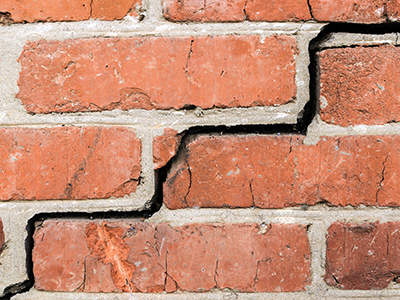
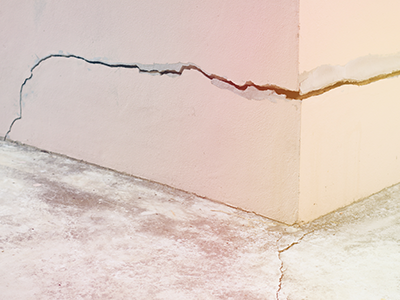
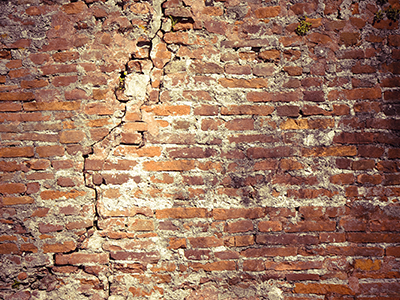
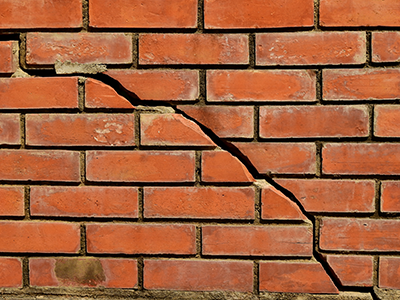
How can you tell if cracked brick is structural?
Now you know what types of cracks are and aren't a cause for concern, you know what to look out for. But unless the building is visibly falling apart, most of the time, you won't be able to tell for yourself if the crack is structural.
Depending on the severity of the cracks, you may need a surveyor or a structural engineer to assess the damage. Fill in the quote form below, or call or contact us today, and our team will talk you through your options.
Can masonry walls be repaired?
How do you fix hairline cracks in bricks?
You can repair mortar cracks with joint sealant, brick sealant or mortar repair caulk. Mortar is made from sand and cement, but if the property is older, you may have lime-based mortar. Check that the new mortar repair you're using is compatible with the old wall. You'll need to remove loose old mortar in a V shape around the crack before filling it with a caulk gun.
How do you repair structural cracks in walls?
Structural repairs should be carried out with the advice of a structural engineer. If the root cause is uneven settlement under the foundations, repairing the wall may involve underpinning the whole building to a significant depth.
Once the cause has been halted, structural repairs should be carried out by a professional contractor. Start by removing the old mortar with a hammer and chisel, then fill in the vertical joints, horizontal joints and stair step cracks with mortar mix or brick-compatible epoxy filler using a brick trowel or 'pointing' trowel'.
How do you permanently fix cracked walls?
Crack stitching is a method used to permanently repair vertical cracks and stair-step cracks, which involves inserting stainless still bars into the vertical mortar bed and grouting them in.
Brick can usually be repaired with mortar or grout, but cracked stone masonry walls will also need repointing once they're made structurally sound to create a seal, preventing moisture from working its way into the building.
How much does it cost to repair masonry walls?
It costs around £20-£30 per square metre to repair masonry walls. However, if the root cause is that the building is settling on unstable ground, then the building will need underpinning, which can cost tens of thousands of pounds. If the cracks are more than 2mm thick, get a structural engineer to carry out a professional inspection and indicate the extent of the issue and estimated costs of repair.
Caragh is an excellent writer and copy editor of books, news articles and editorials. She has written extensively for SAM for a variety of conveyancing, survey, property law and mortgage-related articles.
Andrew started his career in 2000 working within conveyancing solicitor firms and grew hands-on knowledge of a wide variety of conveyancing challenges and solutions. After helping in excess of 50,000 clients in his career, he uses all this experience within his article writing for SAM, mainstream media and his self published book How to Buy a House Without Killing Anyone.

